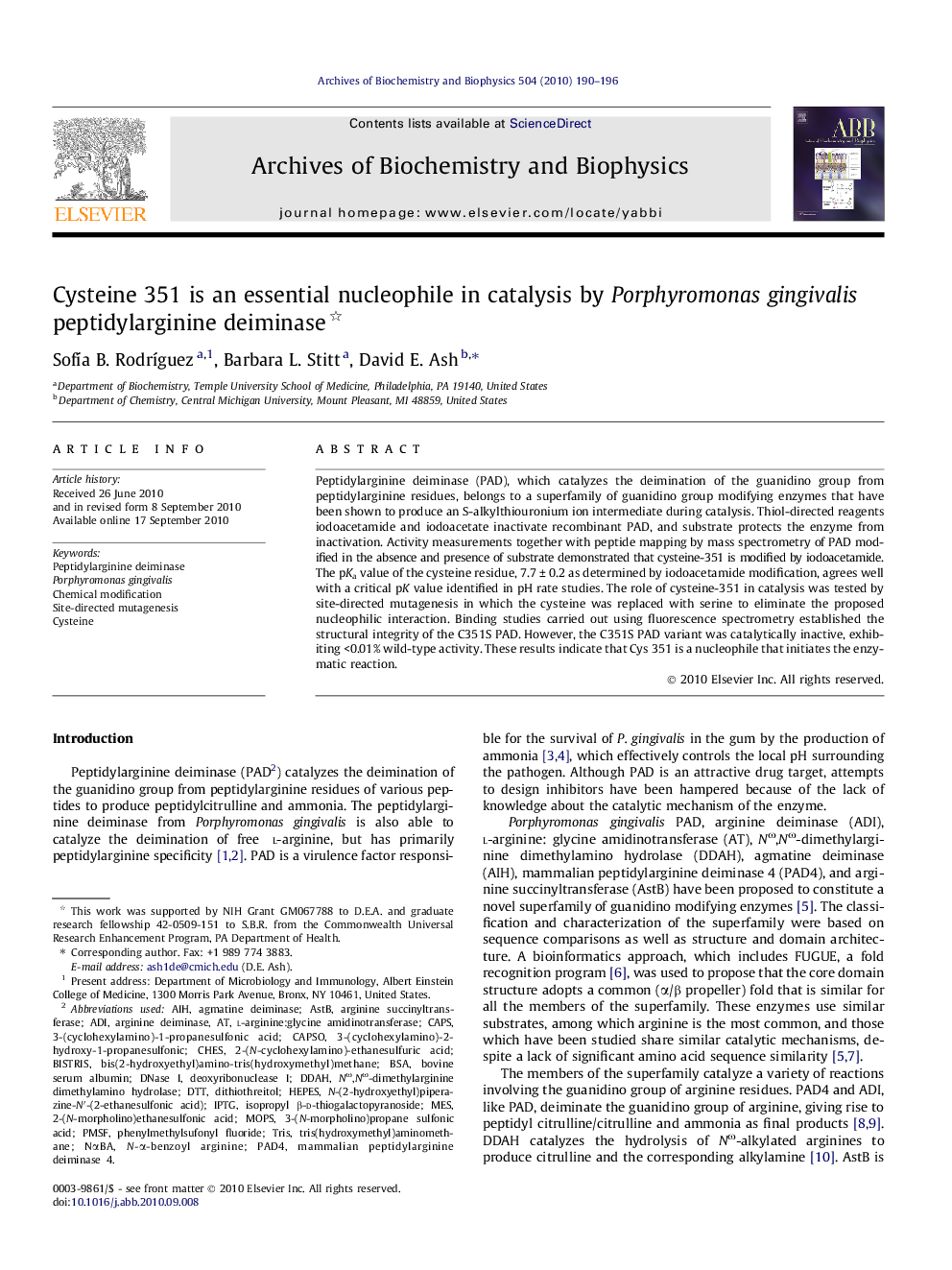| Article ID | Journal | Published Year | Pages | File Type |
|---|---|---|---|---|
| 1925967 | Archives of Biochemistry and Biophysics | 2010 | 7 Pages |
Peptidylarginine deiminase (PAD), which catalyzes the deimination of the guanidino group from peptidylarginine residues, belongs to a superfamily of guanidino group modifying enzymes that have been shown to produce an S-alkylthiouronium ion intermediate during catalysis. Thiol-directed reagents iodoacetamide and iodoacetate inactivate recombinant PAD, and substrate protects the enzyme from inactivation. Activity measurements together with peptide mapping by mass spectrometry of PAD modified in the absence and presence of substrate demonstrated that cysteine-351 is modified by iodoacetamide. The pKa value of the cysteine residue, 7.7 ± 0.2 as determined by iodoacetamide modification, agrees well with a critical pK value identified in pH rate studies. The role of cysteine-351 in catalysis was tested by site-directed mutagenesis in which the cysteine was replaced with serine to eliminate the proposed nucleophilic interaction. Binding studies carried out using fluorescence spectrometry established the structural integrity of the C351S PAD. However, the C351S PAD variant was catalytically inactive, exhibiting <0.01% wild-type activity. These results indicate that Cys 351 is a nucleophile that initiates the enzymatic reaction.
Research highlights► Peptidylarginine deiminase from Porphyromonas gingivalis is inactivated by thiol-directed reagents. ► Cysteine 351 is the amino acid residue critical for catalysis. ► The C351S variant has no detectable enzyme activity.
